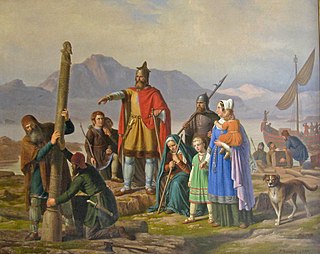For other people named John Platt, see John Platt.
John Platt | |
|---|---|
| Deputy of General Assembly of the Colony of Connecticut from Norwalk [1] | |
| In office October 1678 –May 1679 Servingwith Mark Sension | |
| Preceded by | Walter Hoyt, John Bowton |
| Succeeded by | Richard Olmsted, John Gregory |
| In office October 1680 –May 1681 Servingwith John Gregory | |
| Preceded by | Daniel Kellogg, John Bowton |
| Succeeded by | John Gregory, John Bowton |
| In office October 1681 –May 1687 | |
| Preceded by | John Gregory, John Bowton |
| Succeeded by | Samuel Hayes |
| In office May 1691 –October 1691 | |
| Succeeded by | John Belding, James Olmsted |
| In office October 1692 –May 1693 Servingwith James Olmsted | |
| Preceded by | Samuel Hayes, Thomas Betts |
| Succeeded by | Samuel Betts, Samuel Hayes |
| In office October 1694 –May 1695 Servingwith Thomas Betts | |
| Preceded by | Samuel Hayes, Matthew Marvin, Jr. |
| Succeeded by | Samuel Hayes, Jakin Gregory |
| Personal details | |
| Born | January 11, 1632 [2] [3] Ware, Hertfordshire, England [2] [3] |
| Died | November 6, 1705 [2] [3] Norwalk, Connecticut [2] [3] |
| Spouse(s) | Hannah Clark [2] [3] |
| Children | John Platt, Josiah Platt, Samuel Platt, Joseph Platt, Hannah Platt Marvin (m. Samuel Marvin), Sarah Platt Kellogg (m. Samuel Kellogg), Mary Platt Benedict, and Nancy Platt [2] [3] |
| Residence | Norwalk, Connecticut |
| Occupation | deacon, husbandman [3] |
| Military service | |
| Rank | sergeant |
| Unit | Norwalk Trainband |
John Platt (January 11, 1632 – November 6, 1705) was an early settler of Norwalk, Connecticut. He was a member of the General Court of the Colony of Connecticut from Norwalk in several sessions between 1678 and 1694.

A settler is a person who has migrated to an area and established a permanent residence there, often to colonize the area. Settlers are generally from a sedentary culture, as opposed to nomads who share and rotate their settlements with little or no concept of individual land ownership. Settlements are often built on land already claimed or owned by another group. Many times settlers are backed by governments or large countries. They also sometimes leave in search of religious freedom.

Norwalk is a U.S. city located in southwestern Connecticut, in southern Fairfield County, on the northern shore of Long Island Sound. Norwalk lies within both the New York metropolitan area as well as the Bridgeport metropolitan area.

Connecticut is the southernmost state in the New England region of the United States. As of the 2010 Census, it has the highest per-capita income, Human Development Index (0.962), and median household income in the United States. It is bordered by Rhode Island to the east, Massachusetts to the north, New York to the west, and Long Island Sound to the south. Its capital is Hartford and its most populous city is Bridgeport. It is part of New England, although portions of it are often grouped with New York and New Jersey as the Tri-state area. The state is named for the Connecticut River which approximately bisects the state. The word "Connecticut" is derived from various anglicized spellings of an Algonquian word for "long tidal river".
He was the son of Richard Platt and Mary Wood. [2] [3]
He moved from Milford to Norwalk, and received grants of land there in 1660, 1663 and 1672. [3]

Milford is a city within Coastal Connecticut and New Haven County, Connecticut, between Bridgeport, Connecticut and New Haven, Connecticut, United States. The population was estimated to be 52,536 in a July 2016 estimate. The city includes the borough of Woodmont. Milford is part of the New York-Newark Bridgeport, NY-NJ-CT-PA Combined Statistical Area.
He was a deacon of the church at Norwalk. [3]
He was sergeant of the Norwalk Train Band. [3]
In 1680 he was one of the three commissioners appointed to lay out the plantation north of Stamford. [3]

Stamford is a city in Fairfield County, Connecticut, United States. According to the 2010 census, the population of the city is 122,643. As of 2017, according to the Census Bureau, the population of Stamford had risen to 131,000, making it the third-largest city in the state and the seventh-largest city in New England. Approximately 30 miles from Manhattan, Stamford is in the Bridgeport-Stamford-Norwalk Metro area which is a part of the Greater New York metropolitan area.
In 1687, he was appointed one of the three commissioners chosen to lay out Danbury. [3]

Danbury is a city in Fairfield County, Connecticut, United States, located approximately 50 miles (80 km) northeast of New York City making it part of the New York metropolitan area. Danbury's population at the 2010 census was 80,893. Danbury is the fourth most populous city in Fairfield County, and seventh among Connecticut cities. The city is within the New York combined statistical area and Bridgeport metropolitan area.






